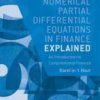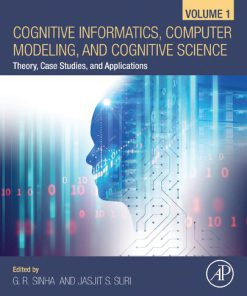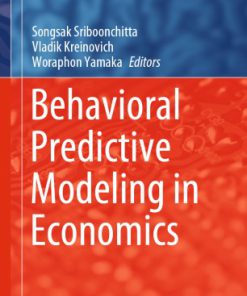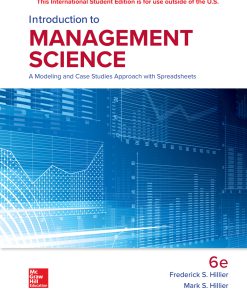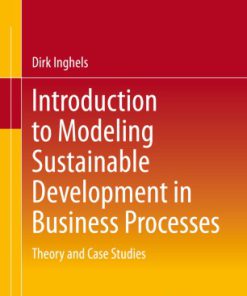Predictive Modeling Applications in Actuarial Science Volume 1, Predictive Modeling Techniques 1st Edition by Edward Frees ISBN 1139989995 9781139989992
$50.00 Original price was: $50.00.$25.00Current price is: $25.00.
Predictive Modeling Applications in Actuarial Science Volume 1, Predictive Modeling Techniques 1st Edition by Edward W. Frees – Ebook PDF Instant Download/Delivery: 1139989995, 9781139989992
Full download Predictive Modeling Applications in Actuarial Science Volume 1, Predictive Modeling Techniques 1st Edition after payment

Product details:
ISBN 10: 1139989995
ISBN 13: 9781139989992
Author: Edward W. Frees
Predictive modeling involves the use of data to forecast future events. It relies on capturing relationships between explanatory variables and the predicted variables from past occurrences and exploiting this to predict future outcomes. Forecasting future financial events is a core actuarial skill – actuaries routinely apply predictive-modeling techniques in insurance and other risk-management applications. This book is for actuaries and other financial analysts who are developing their expertise in statistics and wish to become familiar with concrete examples of predictive modeling. The book also addresses the needs of more seasoned practising analysts who would like an overview of advanced statistical topics that are particularly relevant in actuarial practice. Predictive Modeling Applications in Actuarial Science emphasizes lifelong learning by developing tools in an insurance context, providing the relevant actuarial applications, and introducing advanced statistical techniques that can be used by analysts to gain a competitive advantage in situations with complex data.
Predictive Modeling Applications in Actuarial Science Volume 1, Predictive Modeling Techniques 1st Table of contents:
1 Predictive Modeling in Actuarial Science
1.1 Introduction
1.2 Predictive Modeling and Insurance Company Operations
1.3 A Short History of Predictive Modeling in Actuarial Science
1.4 Goals of the Series
References
I Predictive Modeling Foundations
2 Overview of Linear Models
2.1 Introduction
2.2 Linear Model Theory with Examples
2.3 Case Study
2.4 Conclusion
2.5 Exercises
References
3 Regression with Categorical Dependent Variables
3.1 Coding Categorical Variables
3.2 Modeling a Binary Response
3.3 Logistic Regression Model
3.4 Probit and Other Binary Regression Models
3.5 Models for Ordinal Categorical Dependent Variables
3.6 Models for Nominal Categorical Dependent Variables
3.7 Further Reading
References
4 Regression with Count-Dependent Variables
4.1 Introduction
4.2 Poisson Distribution
4.3 Poisson Regression
4.4 Heterogeneity in the Distribution
4.5 Zero-Inflated Distribution
4.6 Conclusion
4.7 Further Reading
References
5 Generalized Linear Models
5.1 Introduction to Generalized Linear Models
5.2 Exponential Family of Distributions
5.3 Link Functions
5.4 Maximum Likelihood Estimation
5.5 Generalized Linear Model Review
5.6 Applications
5.7 Comparing Models
5.8 Conclusion
5.9 Appendix A. Binomial and Gamma Distributions in Exponential Family Form
5.10 Appendix B. Calculating Mean and Variance from Exponential Family Form
References
6 Frequency and Severity Models
6.1 How Frequency Augments Severity Information
6.2 Sampling and the Generalized Linear Model
6.3 Frequency-Severity Models
6.4 Application: Massachusetts Automobile Claims
6.5 Further Reading
6.6 Appendix A. Sample Average Distribution in Linear Exponential Families
6.7 Appendix B. Over-Sampling Claims
References
II Predictive Modeling Methods
7 Longitudinal and Panel Data Models
7.1 Introduction
7.2 Linear Models
7.3 Nonlinear Models
7.4 Additional Considerations
7.5 Further Reading
References
8 Linear Mixed Models
8.1 Mixed Models in Actuarial Science
8.2 Linear Mixed Models
8.3 Examples
8.4 Further Reading and Illustrations
References
9 Credibility and Regression Modeling
9.1 Introduction
9.2 Credibility and the LMM Framework
9.3 Numerical Examples
9.4 Theory versus Practice
9.5 Further Reading
9.6 Appendix
References
10 Fat-Tailed Regression Models
10.1 Introduction
10.2 Transformation
10.3 GLM
10.4 Regression with Generalized Distributions
10.5 Median Regression
10.6 Appendix A. Tail Measure
10.7 Appendix B. Information Matrix for GB2 Regression
References
11 Spatial Modeling
11.1 Introduction
11.2 Exploratory Analysis of Spatial Data
11.3 Spatial Autoregression
11.4 Average Claim Size Modeling
11.5 Hierarchical Model for Total Loss
11.6 Discussion and Conclusion
References
12 Unsupervised Learning
12.1 Introduction
12.2 Datasets
12.3 Factor and Principal Components Analysis
12.4 Cluster Analysis
12.5 Exercises
References
III Bayesian and Mixed Modeling
13 Bayesian Computational Methods
13.1 Why Bayesian?
13.2 Personal Automobile Claims Modeling
13.3 Basics of Bayesian Statistics
13.4 Computational Methods
13.5 Prior Distributions
13.6 Conclusion
13.7 Further Reading
References
14 Bayesian Regression Models
14.1 Introduction
14.2 The Bayesian Paradigm
14.3 Generalized Linear Models
14.4 Mixed and Hierarchical Models
14.5 Nonparametric Regression
14.6 Appendix. Formal Definition of a Polya Tree
References
15 Generalized Additive Models and Nonparametric Regression
15.1 Motivation for Generalized Additive Models and Nonparametric Regression
15.2 Additive Models for Nonparametric Regression
15.3 The Generalized Additive Model
15.4 Conclusion
References
16 Nonlinear Mixed Models
16.1 Introduction
16.2 Model Families for Multilevel Non-Gaussian Data
16.3 Generalized Linear Mixed Models
16.4 Nonlinear Mixed Models
16.5 Bayesian Approach to (L,GL,NL)MMs
16.6 Example: Poisson Regression for Workers’ Compensation Insurance Frequencies
References
IV Longitudinal Modeling
17 Time Series Analysis
17.1 Exploring Time Series Data
17.2 Modeling Foundations
17.3 Autoregressive, Moving Average (ARMA) Models
17.4 Additional Time Series Models
17.5 Further Reading
References
18 Claims Triangles/Loss Reserves
18.1 Introduction to Loss Reserving
18.2 The Chain Ladder
18.3 Models of Aggregate Claims Triangles
18.4 Models of Individual Claims
References
19 Survival Models
19.1 Survival Distribution Notation
19.2 Survival Data Censoring and Truncation
19.3 National Nursing Home Survey
19.4 Nonparametric Estimation of the Survival Function
19.5 Proportional Hazards Model
19.6 Parametric Survival Modeling
19.7 Further Reading
19.8 Exercises
19.9 Appendix. National Nursing Home Survey Data
References
20 Transition Modeling
20.1 Multistate Models and Their Actuarial Applications
20.2 Describing a Multistate Model
20.3 Estimating the Transition Intensity Functions
20.4 Estimating the Transition Intensities with Outcomes Observed at Distinct Time Points
People also search for Predictive Modeling Applications in Actuarial Science Volume 1, Predictive Modeling Techniques 1st:
application of actuarial science
how to apply for actuarial science
how to prepare for actuarial science
actuarial predictive modeling
predictive modeling in insurance
Tags:
Edward Frees,Predictive,Modeling,Applications,Actuarial Science,Predictive Modeling,Techniques
You may also like…
Business & Economics
Behavioral Predictive Modeling in Economics Songsak Sriboonchitta
Business & Economics - Industries
Business & Economics - Others
Politics & Philosophy - Social Sciences
Science (General)
Politics & Philosophy - Anthropology
Exploring inductive risk : case studies of values in science 1st Edition Elliott



